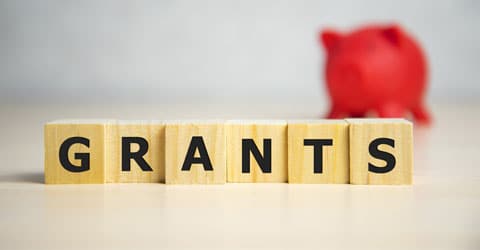

Applying for a Community Grant from the T. Colin Campbell Center for Nutrition Studies is much easier than you might think. With a few helpful hints and solid planning, you can put together an application that makes your project shine. The following information will help you submit your best application for a CNS Community Grant.
Make sure that your organization has tax-exempt 501(c)(3) non-profit status or a partnership with an umbrella organization to provide this status. Look over the additional eligibility and reporting requirements to ensure that you qualify to apply. Once you have done these two things, you are ready to dig in.
Let’s start with a mile-high view of what our reviewers are looking for. Overall, your application needs to convince reviewers that you and/or your organization:
Now that you have the big picture, here are some pointers to strengthen your application.
Your role is to be a salesperson. You are selling your ability to lead the project, your organization’s ability to manage the project, and the project’s viability and potential for success.
A mixture of professionalism, planning, and passion will go a long way. Draw the reviewer in, and bring the project leaders and participants to life. Numbers are important, but what is at the heart of your project? What makes it special? Why should the reviewer choose your project over other similar projects?
Don’t leave the reviewers wondering. Fill in the gaps for them.
Examples: (1) Projects with outside support and collaborators have greater chances for both initial success and long-term viability. If your organization does not have any community partners, help the reviewers to understand why. (2) Past accomplishments are used to gauge future success. If you don’t have similar projects to point to, reference projects where you used similar skills to the ones needed for the current project. If you have never worked on a project, explain the skills and experiences you do have that have prepared you to take on your first project.

Having a great project isn’t everything. Be realistic and avoid assumptions.
Examples: (1) When determining your project’s impact and the number of people who will benefit, don’t get caught in the “put it online and they will come” fallacy. People will not automatically see information or flock to your classes just because you make them available online. It is best to use your organization’s and partner organizations’ social media and website statistics to estimate the true reach of your online resources and programming. Potential reach is not the same as realistic reach. (2) Just because you create a project doesn’t mean that people know about it or that the intended participants want to be involved. Spend time figuring out the most effective ways to reach your audience and best ways to encourage them to participate in your project.
All abbreviations and acronyms need to be explained. Always use the full name of an organization before using its acronym. Similarly, use a full term before using its abbreviation. Keep in mind that not all reviewers live in your work world, so they may not know the jargon that comes along with it. Be sure to define any terms reviewers may be unfamiliar with.
Identification of potential project challenges and current community strengths are two aspects of a project that often receive little attention in the planning phase. Having a good grasp of potential challenges and current community strengths can significantly increase a program’s chances of success.
The word budget is enough to send some people running. Budgets conjure up images of dizzying rows of numbers spanning many pages. For the purposes of this grant, keep it simple. Show us that you have a good understanding of what it will take to fund your project. No fancy graphs, spreadsheets, or overall organization budgets are needed. Provide a straightforward budget with an itemized line for each budget expense.
Projects that are financially sustainable and easily replicated are attractive to funders.
You are ready to apply. You can do this! Be straightforward. Show passion for your work. Use common sense. Ask questions if you don’t know.
Visit our Grant Portal to apply. We look forward to receiving your application!
Copyright 2025 Center for Nutrition Studies. All rights reserved.